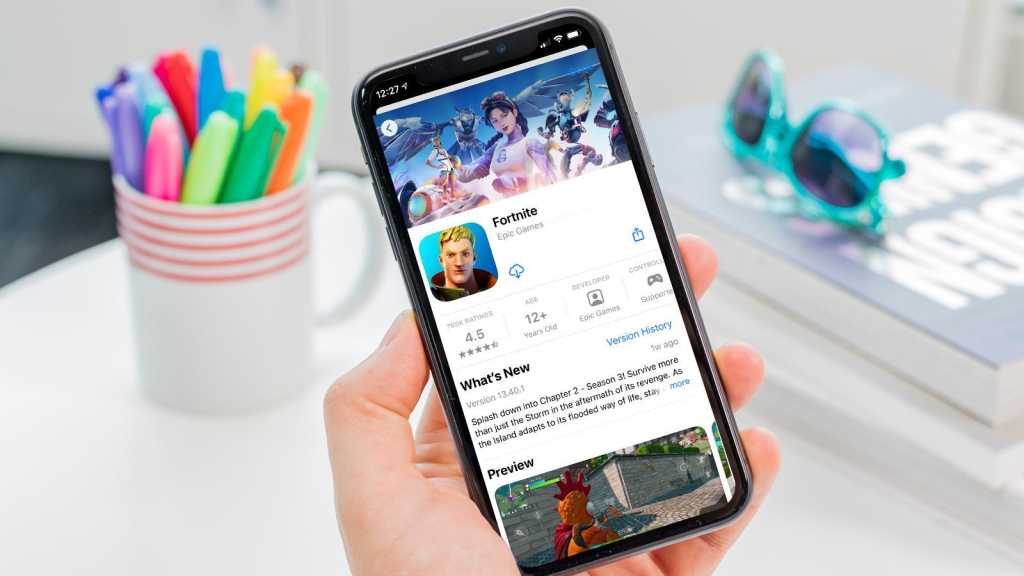Tim Sweeney, the opinionated founder and CEO of Fornite maker Epic Games, has hinted that the game may return to the iOS platform in 2023.
On the last day of 2022, Sweeney posted a tweet that read simply, “Next year on iOS!”
He then replied to the tweet with an image showing a screenshot or mockup of the game, with a player (equipped with the Jellie skin, if we’re being specific) looking into the sky and seeing the new year spelled out in fireworks.
There are various interpretations, of course, but the obvious conclusion–and the one drawn by most commenters–is that Fortnite, banned from iOS following a legal dust-up with Apple beginning in 2020, will return to the platform in some form in 2023. Given the popularity of the game and the magnitude of the iPhone user base, this is potentially huge, far-reaching news.
But how could this come to pass? Given the bad blood between the companies it seems unlikely that Apple would reinstate Epic’s developer account and allow the game back on to the official App Store. However, it’s understood that Apple plans to allow alternative app stores on the iPhone as of the launch of iOS 17 this year, and Epic would dearly love to release its own store/app launcher… coincidentally avoiding the necessity to pay Apple a cut of the revenue it makes.
We suspect, mind you, that Apple will do its best to make alternative app stores arduous and awkward to use. But Epic really has nothing to lose and a huge amount of revenue to gain.
Paradoxically, the seemingly imminent presence of third-party app stores on iOS might make Apple more likely to reinstate Fortnite to the official one. If iPhone owners are going to be playing Fortnite, the company may reason, we might as well get some money for it. Not to mention that a game as big as Fortnite being available but restricted to a third-party store might encourage more users to venture outside the walled garden, which is the worst result as far as Apple is concerned. Fortnite on the official store (which will likely remain the destination of choice for the vast majority of users), with honor somehow satisfied on all sides, would be a win-win for the companies.
Either way, if Fortnite is set to make an iOS comeback, it would represent a stunning conclusion to a long-running and bad-tempered saga. At the start of this decade Epic was one of the loudest voices complaining about Apple’s arguably monopolistic governance of the App Store, challenging among other things the legitimacy of Cupertino’s 30 percent revenue cut and demanding that app developers be allowed to use alternative payment systems which bypass this. Indeed, the developer went ahead and implemented its own payment system unilaterally, which violated the store’s terms, leading to Apple removing the game and closing Epic’s account.
At the time many observers sided with Apple, reasoning that Epic had knowingly broken the rules in order to provoke a reaction, and the judge in the companies’ lawsuit supported Cupertino on nine out of ten counts. (Apple called this a “resounding victory,” while appealing against the lone lost count.) But opinions have shifted a little since then, with commercial and political pressure growing for Apple to relax its rules. Alternative payment systems have begun to be allowed in various territories, while the revenue cut has been dropped to 15 percent in many cases. The plausible report of alternative app stores in iOS 17 gives an idea of how much the ground has shifted under the two firms’ feet since they started fighting, and we suspect that Apple would love to find a way to get out of this conflict while saving face. If Sweeney can go a few months without tweeting anything rude, expect a thawing of relations later in 2023.
In the meantime, here’s how to play Fortnite on the iPhone despite the ban.

